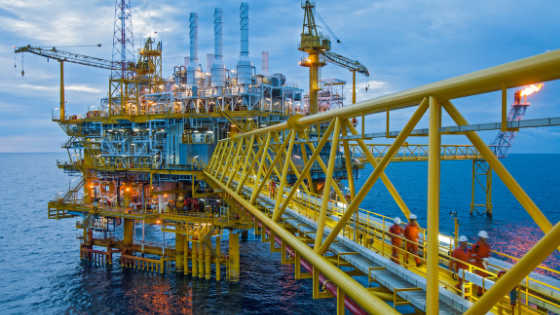The oil and gas industry continues to be among the highest-risk industries for workers.
Between fire hazards, chemical hazards, confined spaces, heavy machinery, falls, ergonomic hazards, and electrical hazards, the workplace looks like a magnet for disaster–if you don’t take steps to prevent them.
Between OSHA guidelines and common sense, you have plenty of room to make your workplace safer. Here are a few tips to help you get on track.
Invest in a Safety Program
One of the most basic things you can do to ensure the safety of your workers is to invest in a good safety program.
This safety program should adequately address the common safety problems your workers face, including steps to prevent potential hazards and what workers should do if a situation takes a turn for the worse.
But at a deeper level, you need a safety program that unites your workers. Your safety program won’t do you any good if you haven’t cultivated an atmosphere of respect and dignity. Workers should feel secure enough to come to you with problems. They should feel confident that when they come to you, you’ll take steps to quickly and effectively address the problems they’ve raised.
Collaborate with Local Emergency Response Teams
Part of this process is actively collaborating with your local emergency response teams.
Your local emergency response team is your first point of contact if something goes wrong. They’re also the ones best equipped to tell you how emergencies can happen and what you can do to avoid making that dreaded 911 call.
So, take the time to actively work with your local emergency responders. Make sure that you’ve created a relationship where everyone involved – first responders, rig workers, and health and safety professionals at your company – can quickly and effectively pool resources in the event of an emergency.
Actively Monitor the Health of Workers
Of course, monitoring the situation at in the workplace isn’t enough. Your workers are just as much a part of the safety of your workplace as any policy you implement, and you need to ensure they are willing and able to participate in keeping their colleagues safe.
For starters, you should ensure that all employees are trained in the appropriate safety procedures. You should conduct regular checks to ensure that employees are following the safety procedures you’ve set.
Worker culture plays a huge role in the overall health and safety of the industry. In particular, the pervasive “tough guy” attitude can pose serious risks if you allow it to play a role in your workplace.
When your workers are trying to uphold the tough guy stereotype in your workplace, they’re more likely to internalize stress and fatigue. They won’t say anything if they’re in pain and they won’t say anything if something is affecting them which could turn into a larger problem for those around them.
To prevent this, you have to promote a culture of openness. Put the time and effort into building a community and a sense of trust and openness among your workers. This way, they’re far more likely to speak up when something is bothering them and won’t try to soldier through if they see something wrong.
And as an employer, that creates a far safer, healthier worker environment. Plus, it leaves you with employees who are ultimately far happier with their work experience.
Mastering Oil and Gas Safety
Oil and gas safety doesn’t have to be an uphill battle. You just need the right tools for the job. We know the unique challenges faced by employers in the oil and gas industry, and we know that you need the best solutions to eliminate safety risk. If you’d like to find out how we can help, contact us to get in touch.
